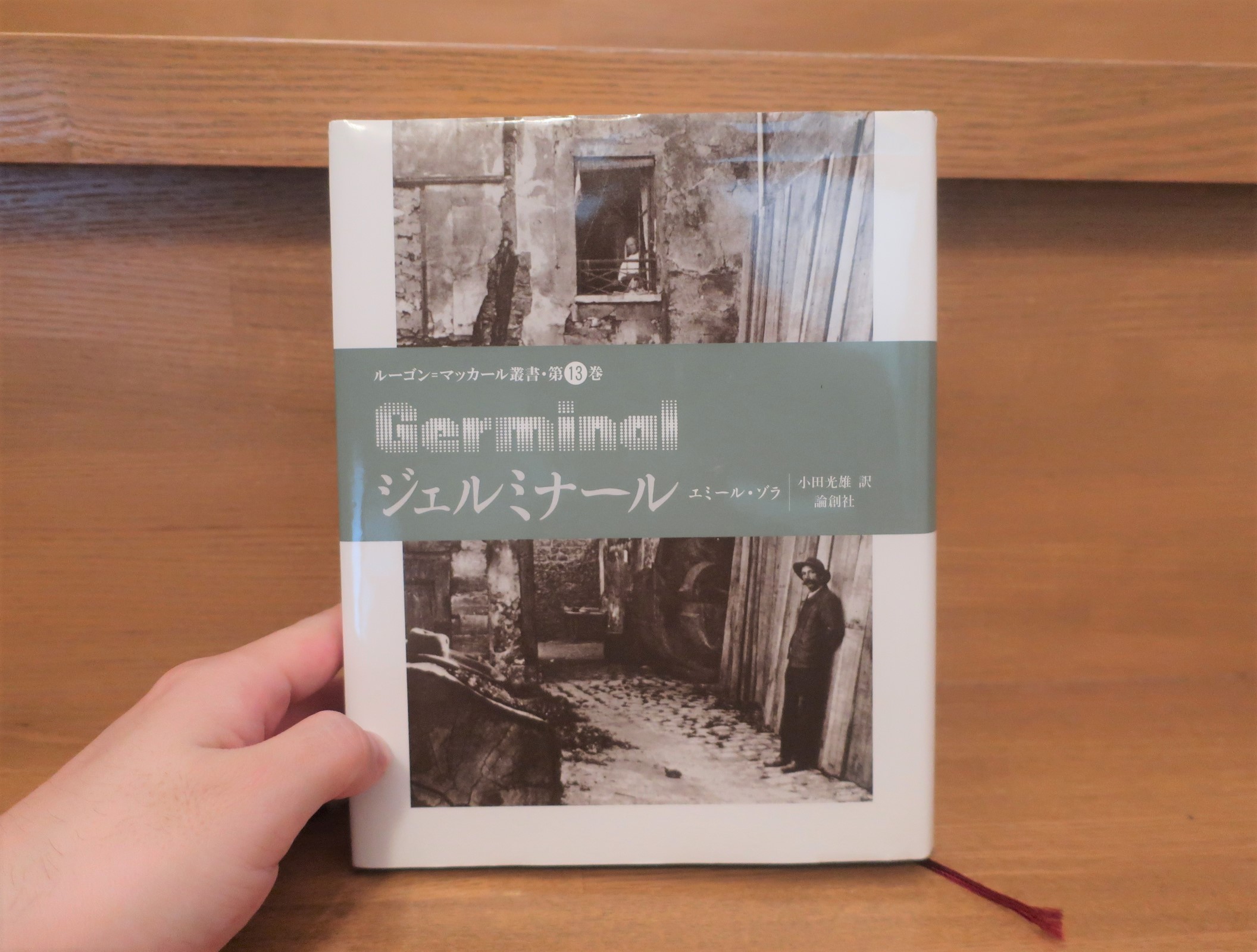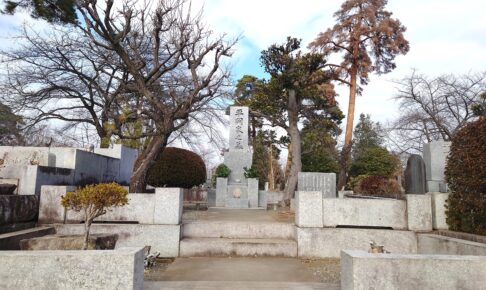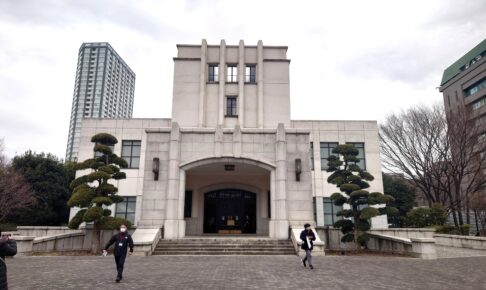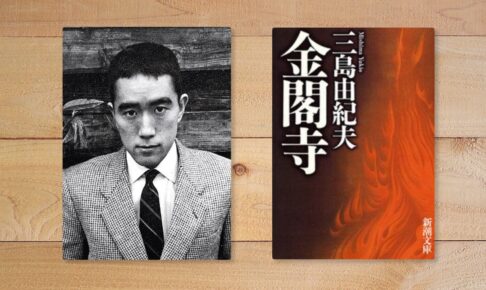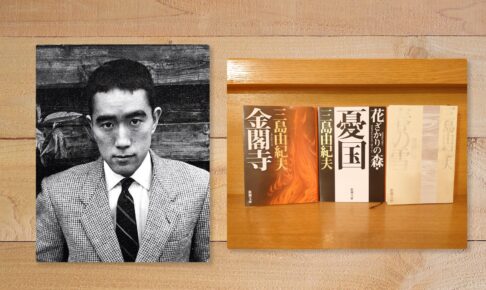Summary and synopsis of "Lugon Makkar Series," Volume 13, "Germinal."
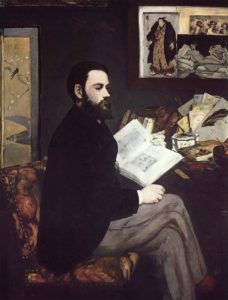
Emile Zola (1840-1902)Wikipedia.
Gelminard" is the 13th volume of the "Lugon-Macall Series" completed by Emile Zola over a period of 24 years, and was published in 1885.
I read "Germinar" translated by Mitsuo Oda, published by Ronsosha Publishing Co.
Again, let's look first at the synopsis listed in the obi.
It illuminates the reality of coal mine labor hundreds of meters underground and its social structure.
The conflict between capital and labor in modern industrial society!
The conflict between capitalists and workers plunges into a harsh strike involving their families.
Ronsosha Publications, Gelminar, translated by Mitsuo Oda.
The protagonist of this work isIzakaya."Etienne is the third son of Gervaise, the protagonist of the
He is located in the McCall family on the right side of the family tree and is a masterpieceNana."He is the half-brother of Nana, the protagonist of
This film is about Etienne, who became a coal miner and describes the reality of coal mining, the conflict between capitalists and workers, and the harsh strikes, crowd madness, and riots.
In the translator's afterword, there is an explanation that is very important for understanding this work, so I will quote it, although it is lengthy.
The setting of "Germinal" is estimated to be between 1867 and 1869, followed by the Franco-Prussian War and the Paris Commune, and the story of "Nana" also takes place in the same period as that of "Germinal. The coal mines that supported the prosperity of the Second Empire were driven into crisis by the economic depression that began in 1967, and the labor movement was brought to the forefront, and the coal mine strikes in La Camarie and Aubin were actually suppressed by the military, resulting in a bloody disaster. Gelminaire is a work that is situated in the vicinity of the coal mines and the labor movement of the same period.
In Part 1, Chapter 1, the coal mines of this period emerge from the conversation between Etienne and Bonnemor. It is precisely this that illustrates the relationship between capital and labor.
The factories around the Monsoe Mining Company are in the midst of a recession, hit by the industrial depression. The Monsoe region is also suffering from hunger and unemployment. Nevertheless, the company has 13 coal mines in operation, employs 10,000 workers, has mining areas in 67 towns, produces 5,000 tons of coal per day, and has a railroad connecting the mines. The miners see it as a tremendous asset, but ostensibly the company is run by the manager, Ennebaugh, who is only a hired hand.
Etienne asks Bonnemor who owns this whole area.
What? Who owns this area? No one knows who owns this place. He raised his hand and pointed to an obscure area in the darkness, an unknown place far in the back where the businessmen lived. For them, Mayu's family had been digging for coal for more than a century.
His voice rang with religious awe, as if he were speaking of an inaccessible sacred place, where a god they had all offered their flesh, but had never seen before, was huddled, cowering in a full belly.
This is the metaphor of modern capital, which is told over and over again. It seems to be the idol of modern society that has replaced the gods and masters of the past. A part of this capital is described as stock, and its agent is the administration, and by extension, the prefectural authorities, the military, and the gendarmerie, but the full picture is not revealed, and the coal mine strike by Etienne and his men also presents the aspect of a struggle against invisible capital.
This struggle from the side of labor against invisible capital began in the same period, and the currents of European socialist thought of the late nineteenth century were introduced into the Germinaire, from the Russian Narodniki current to Proudhonism, revolutionary collectivism, Sandicalism, and the First International's Marx's thought also seems to be an aftermath.
Ronsosha Publications, Gelminar, translated by Mitsuo Oda, p. 694.
Now, you are starting to see the second half of the surprise. The novel also has ties to Russia.
These ideas are projected onto the various characters surrounding Etienne: Sverlin, Rathnour, and Prussiaire. Sverlin, who goes on to destroy the Vaudreux Tunnel, can be assumed to be an exiled Russian who was a member of the "People's Will" party that originated with the Russian Narodniki, was influenced by Bakunin, and assassinated Alexander II, and the episode he tells is not fiction, but fact, and is the same story that Zola It is clear that Zola has read the Russian Narodniki documents and molded Svarin.
Ronsosha Publications, Gelminar, translated by Mitsuo Oda, p. 694-695.
Gelminar" depicts the process by which socialist ideology finally became radicalized and drove the workers into a frenzy and riot.
These radical socialist ideas, which were gaining momentum in France, finally spread to Russia in earnest, and in 1881, Tsar Alexander II was assassinated.
This incident occurred shortly after Dostoevsky's death, and Dostoevsky himself began writing a series of articles in 1871Evil Spirits."I was concerned about the outburst of socialist ideology in the work called That concern has been right on target.
In "Germinal," we see the oppressed workers, the reality of unknowable stock market domination, and the consequences of a socialist ideology that is spiraling out of control.
Socialist thought may sound complicated, but this work is neither a philosophy book nor a technical book. Zola tells the actual content through people's stories and weaves socialist thought into the story in a very easy-to-understand way.
It is much easier and more interesting to learn than reading difficult technical books.
Thoughts - From a Dostoevskyian Perspective
Now, finally, we have a story directly connected to Dostoevsky.
Dostoevsky's masterpiece, "Evil Spirits," is also a work that depicts the very result of socialist ideology. The influence of Dostoevsky's work can be seen in the chapter about the Grand Inquisitor in "The Brothers Karamazov".
Gelminar" is another tragic story. All the stories in Zola's "Lugon Makkar Series" basically depict people's miserable lives, but this one is the most miserable of them all.
Despite the harsh conditions of coal mine labor, they receive wages that are barely enough to make a living. The economic recession has further reduced wages.
To overcome this situation, Etienne, who was steeped in socialist ideology, persuaded the people to become a leader and lead a strike.
But nothing is achieved, and they just become even poorer and starve.
Finally, people's anger exploded and a riot broke out. The leader, Etienne, does not want violence. But once the madness ignites, the anger of the crowd can no longer be controlled.
Against Etienne's will, the crowd destroys the traitor's coal mine, smashes the store of an unscrupulous merchant who is reluctant to sell, and kills him. The behavior of the women toward the dead is too cruel to be described here. It is a hair-raising experience for any man. (Can you get the idea of what I'm talking about?)
They would tear them off with their hands, tie the bloody "thing" to the end of a stick, hold it up in the air, and parade it around, waving it like a flag. In fact, the poor merchants preyed on the women of poor families who could not afford to pay in exchange for their goods. This was the background to the women's outrage. It was a scene that made me shudder to think of the madness of people in a crowd, even though they had it coming to them.
Now, I digress a bit, but this novel depicts the misery of workers, the reality of giant corporations and capitalists whose realities are invisible, and what the socialist ideology is all about.
It is the best book to know what kind of lives, thoughts, and sufferings people had during this period.
As usual, Zola even went to the coal mine to conduct careful interviews to write this piece.
The work "Germinal" had such an impact on society that it is always introduced alongside "Izakaya" and "Nana" as Zola's masterpiece.
It is true that this story is very intense. It is a theme that is directly relevant to today's society, and I would like to see more of this story published in Japan, not as an old classic, but as a work that shines brightly in the modern age.
It is a great work that is well worth reading, so why don't you all experience Zola's full force?
The above is "Zola's "Germinal" Synopsis and Comments - Strike and Workers' Tragedy in the Coal Mine: Zola's Crab Ships".
Next Article.
Click here to read the previous article.
Related Articles












